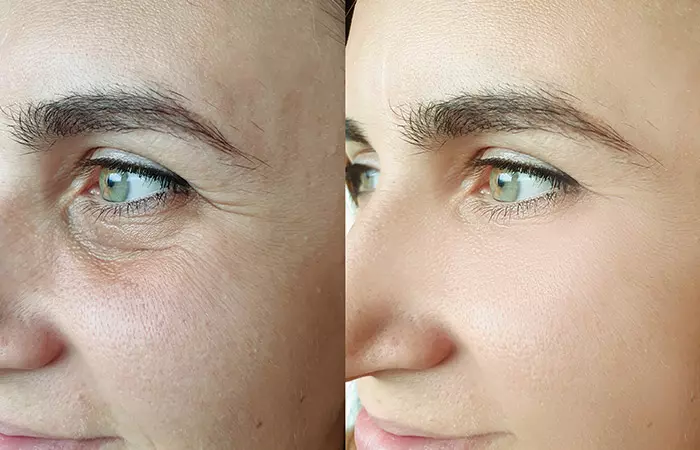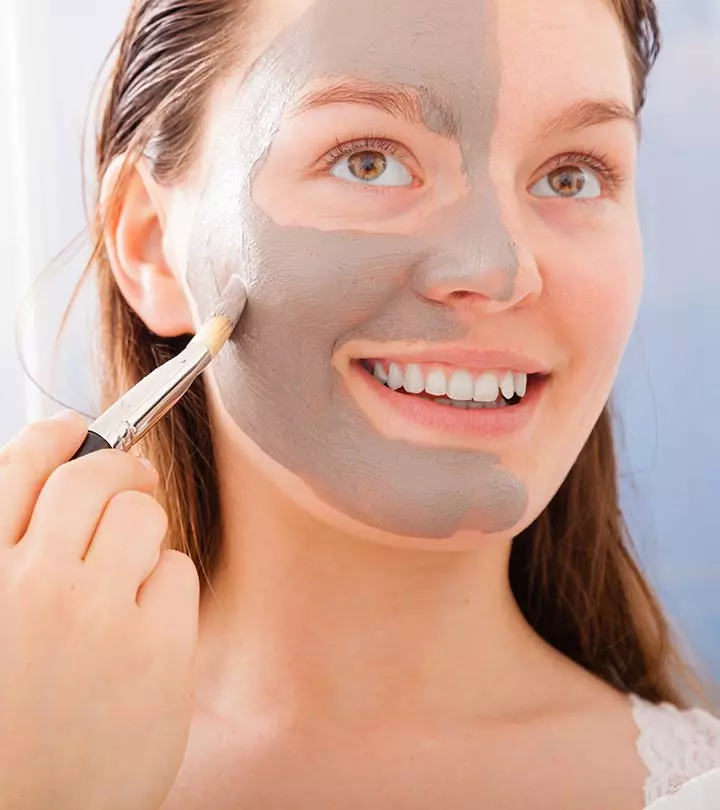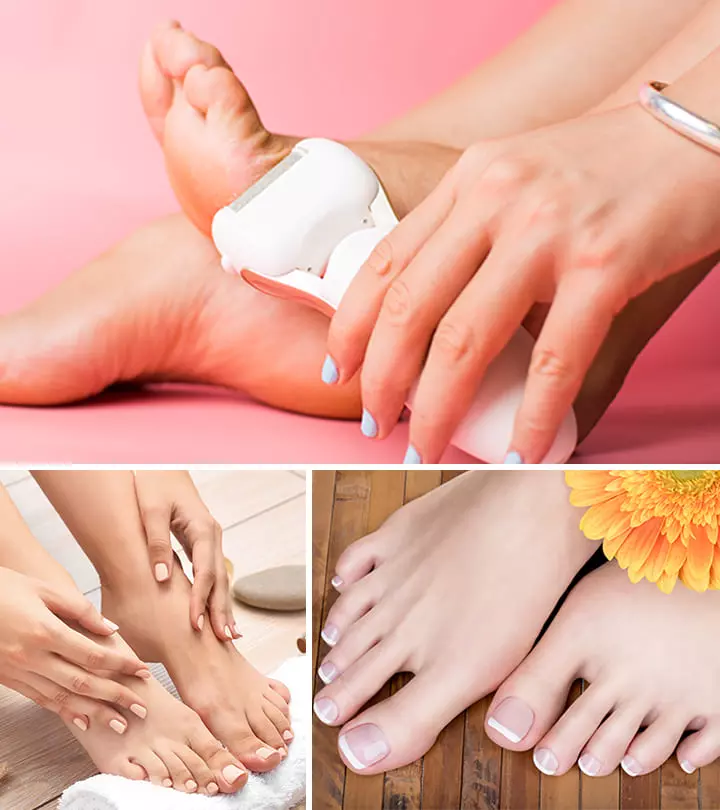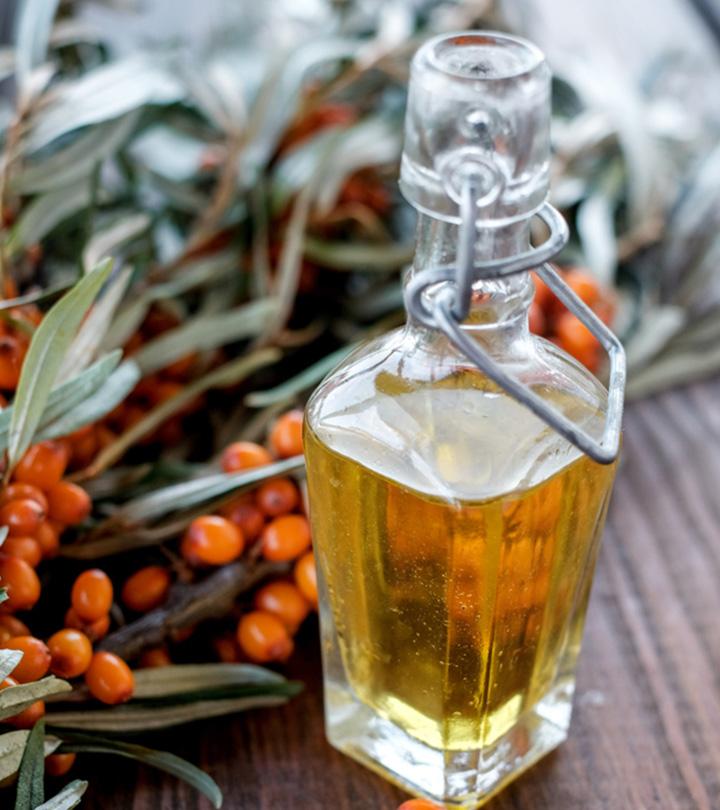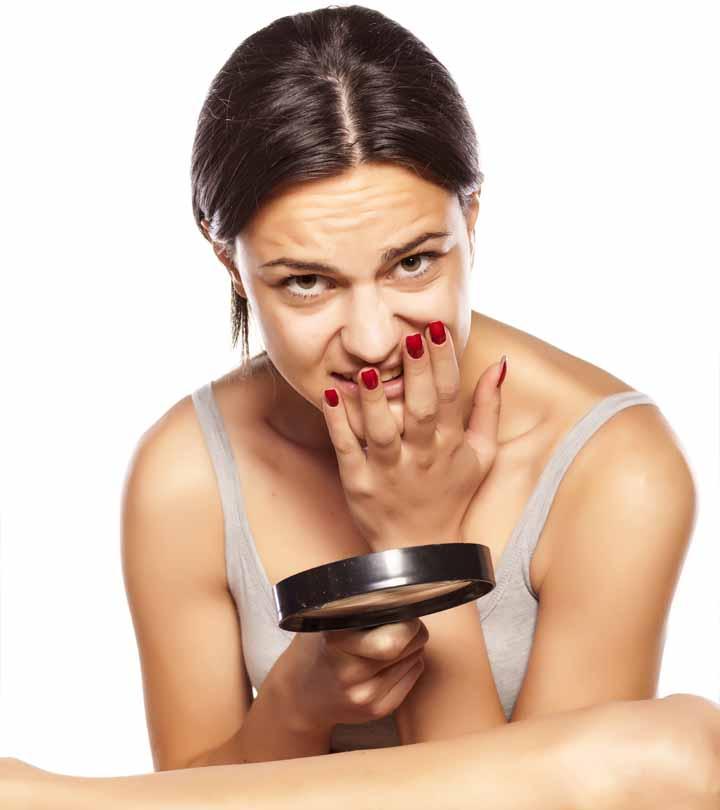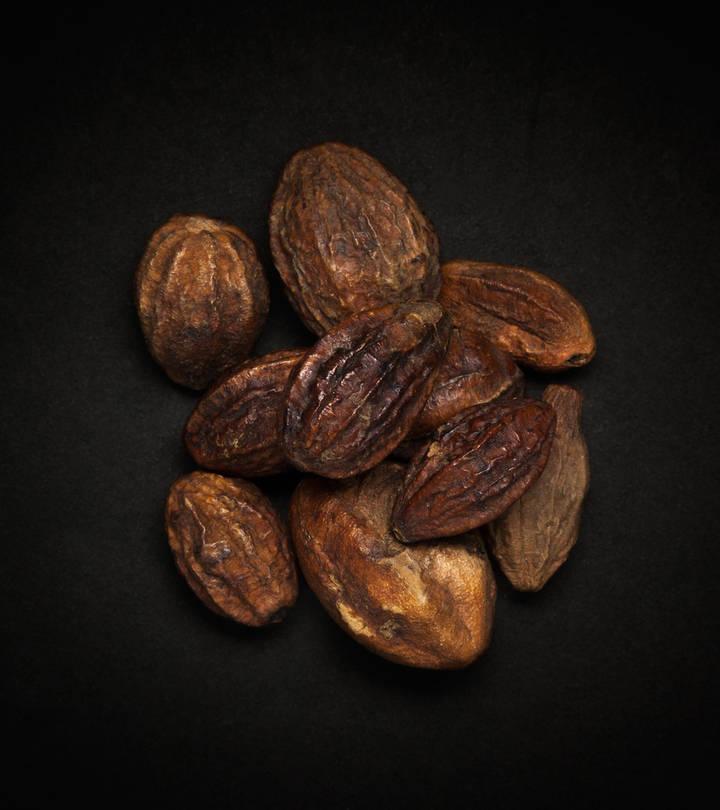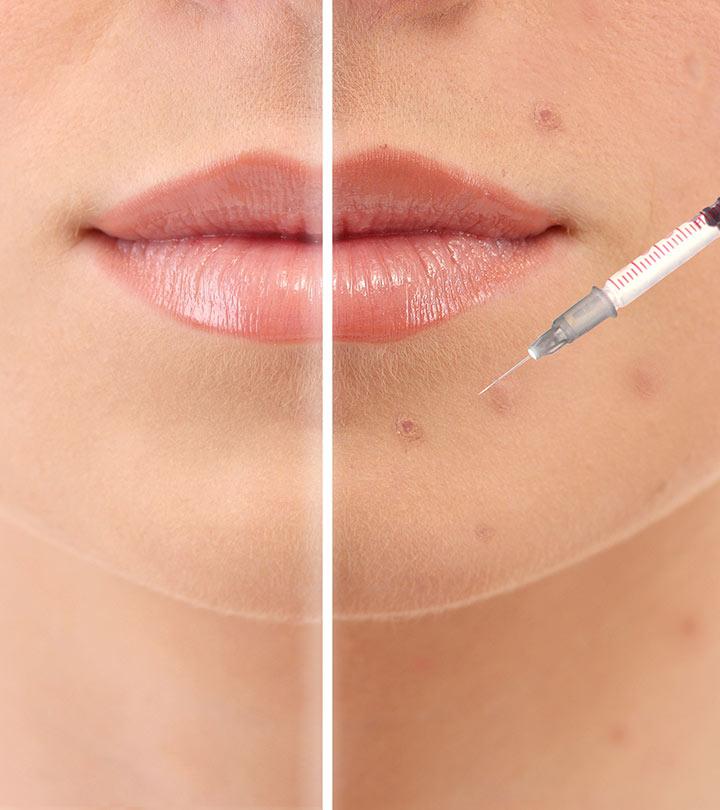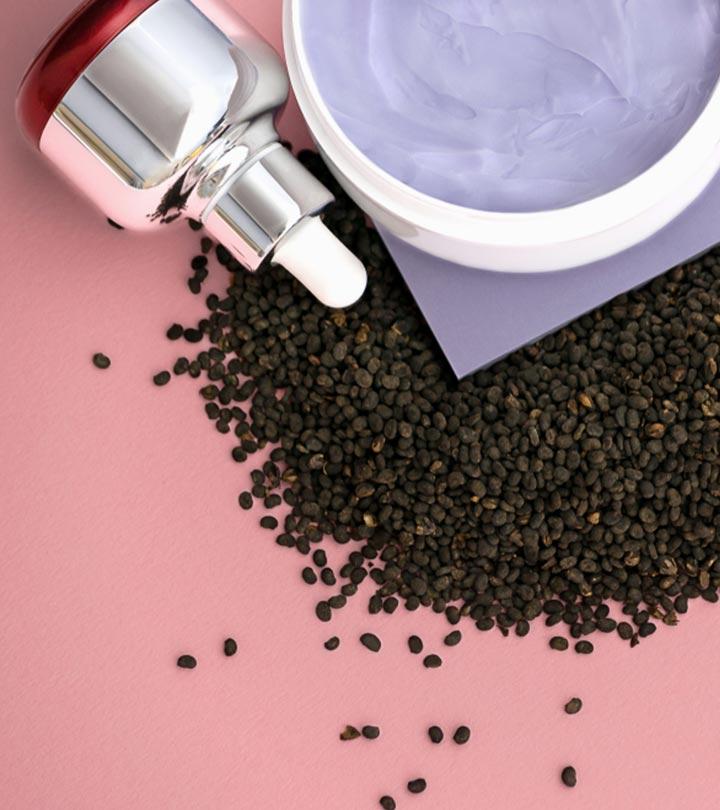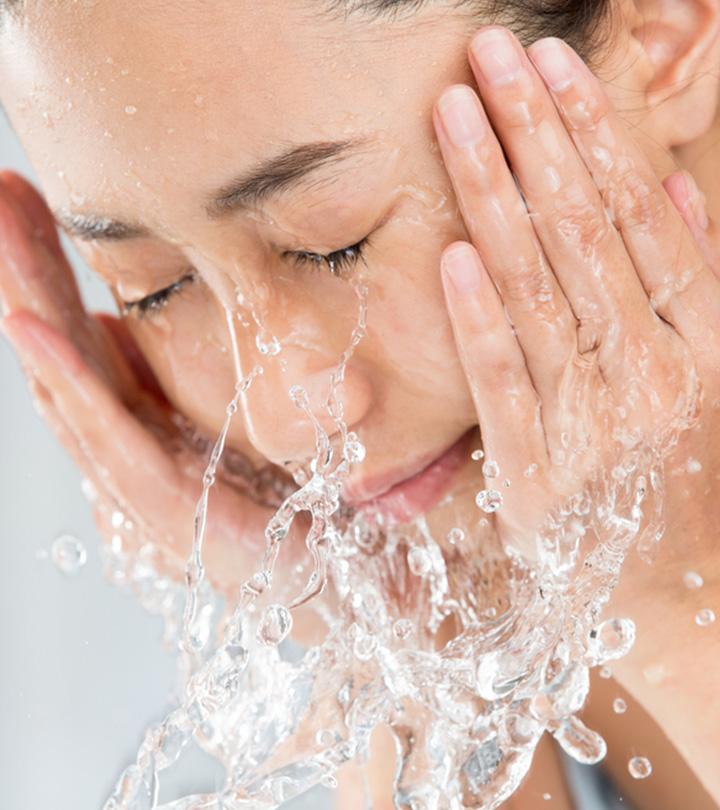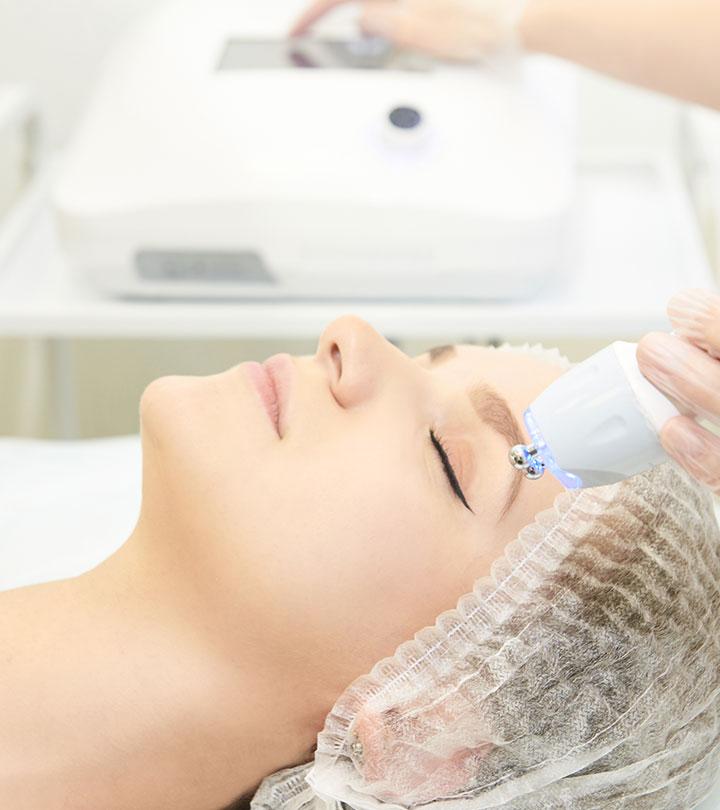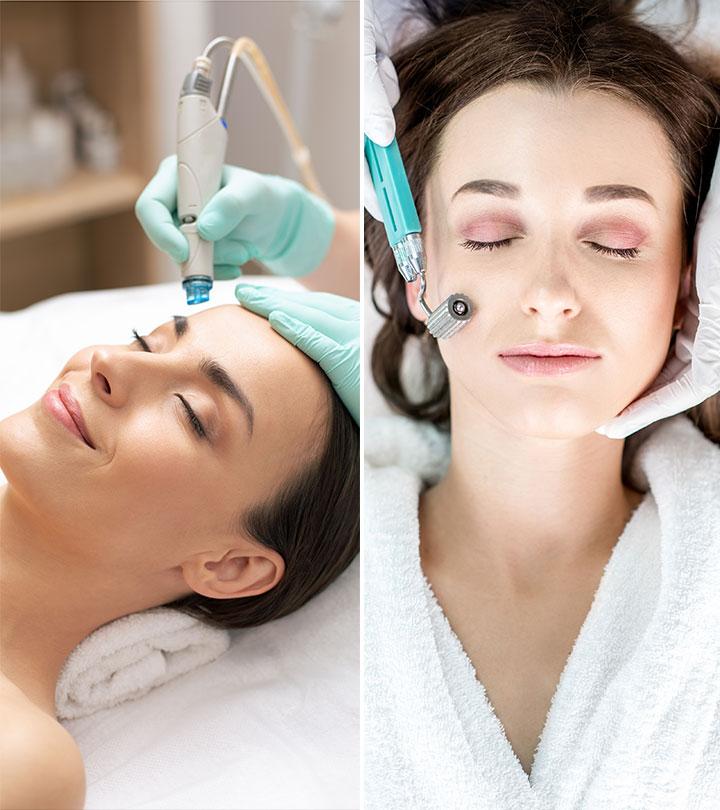What Is Thread Lift? How It Works, Cost, And Side Effects
Minimally invasive cosmetic treatment to tighten skin that tackles all aging-related woes

Image: Shutterstock
Thread lift is one of the best options available if you want to tighten your facial skin and lift it without going under the knife. It is a minimally invasive technique that does not require you to undergo surgical procedures. Thread lifts may help improve your face shape, tighten the sagging skin and reduce fine lines and wrinkles. It involves looping a surgical thread under your skin to lift the sagging skin, followed by correcting jowls and double chin. This may be the best solution available for those looking for minor cosmetic upgrades. This article delves into everything you need to know about thread lifts. Keep reading!
In This Article
What Is A Thread Lift?
Thread lifting is a minimally invasive cosmetic procedure that lifts and realigns sagging tissue (1).Thread lifting is a minimally invasive cosmetic procedure that involves temporary sutures to lift and correct sagging and add definition to your facial contours. Instead of surgically removing the loose facial skin, certain sections are stitched up to keep the skin taut. This creates the effect of pulling the skin back and lifting and tightening the face. A thread lift delivers similar benefits to a facelift, with advantages, such as shorter downtime, no scarring, and lower cost.
Read the next section to know how it works.
How Does A Thread Lift Work? Expert Insights
Dr. Melanie Palm, MD, board-certified dermatologist and cosmetic surgeon at Art of Skin MD, says, “Thread lifts come in different types and accomplish different goals. Thread lifts made from absorbable suture material slowly dissolve under the surface of the skin they are placed. This helps to form new collagen. If thread lifts are meant for tissue lifting rather than simply collagen stimulation, they often have cones or barbs to grip tissue during placement and provide a temporary lifting effect.”
Read on to explore the various types of threads used in the thread lift procedure.
What Types Of Threads Are Used In Thread Lift?
1. PDO Threads
PDO (polydioxanone) threads have the longest history and were traditionally used for surgical stitches. They are made of a biodegradable synthetic polymer and absorb into the body after six months. PDO threads are further categorized into mono, cog, and screw threads.
2. PLA Threads
PLA (polylactic acid) threads are made of a biocompatible polymer produced from lactic acid. They help restore the shape of the face by increasing the volume of sagging areas. These threads provide a ‘lifted’ effect to your face by hooking to the tissue with cones. PLA threads are resorbable and allow collagen regeneration for a longer time than PDO threads.
3. PCA Threads
The thread breakdown process generates molecules with low molecular weight, which stimulates the skin’s collagen and hyaluronic acid production. It also boosts collagen formation for a longer period than PDO and PLA threads.
If you are wondering about the costs involved, head to the next section.
How Much Does A Thread Lift Cost?
The average cost of a thread lift is $2,075. The price depends on the surgeon’s level of expertise, the treated area, and the kind of threads used. You can either choose to target one area or several areas at once, which will increase the cost.
Also, your surgeon may recommend additional therapies or cosmetic procedures, such as Botox, Xeomin, Juvederm, or HIFU, to boost the effects of the thread lift. Make sure you are aware of any costs associated with these procedures.
Thread lifts are usually performed in facial areas that look saggy or less elastic. The following parts of your face can be considered for this procedure.
Targeted Areas For A Thread Lift
- Jowls
- Jawline
- Browline
- Under-eye area
- Forehead
- Cheeks
- Neck
Those who want to reverse the signs of aging without undergoing any cosmetic surgeries may benefit from a thread lift. The next section details who can opt for this procedure.
Who Can Undergo A Thread Lift?
- People with mild to moderate sagging or loose skin in the face or neck
- Women and men in their late 30s to early 50s.
- People who cannot go for plastic surgeries due to age-related conditions, like high BP, type 2 diabetes, and cardiovascular disease
- People who do not want to undergo more invasive procedures, such as a facelift, but want similar, promising results
- Those who have previously undergone a facelift but the results of that treatment are wearing off
- Someone who wants a sculpted look but is not ready for the downtime and costs associated with a facelift
If you are wondering if thread lift is appropriate for you, here’s a step-by-step breakdown of what happens during the procedure.
Thread Lift Procedure
Step 1: The dermatologist marks out where each thread will be placed after identifying the areas of your sagging skin.
Step 2: Local anesthetic is applied to the treatment areas to ensure a comfortable and pain-free experience.
Step 3: The dermatologist inserts the threads using a syringe beneath the skin based on the markings.
Step 4: The threads are twisted and molded into place before being pulled back and tightened. They cling to skin tissue and lift sagging areas back into place.
Step 5: The threads are cut off to ensure they are secure and completely hidden within the skin.
Step 6: The skin is cleaned, and you are free to go home.
A thread lift procedure usually takes between 30 minutes to an hour, depending on the targeted areas and the number of threads utilized.
Check out the images below to understand the results of thread lift procedures.
Thread Lift Before And After Images
Here are some suggestions to keep in mind before and after a thread lift treatment to ensure the best results.
Thread Lift Before And After Care, According To An Expert
Before
Dr. Melanie Palm, MD, board-certified dermatologist and cosmetic surgeon at Art of Skin MD, says, “Stop all medications, supplements, and food that may cause excessive bleeding time or platelet dysfunction (ask your healthcare provider for a list). Do not perform thread lifts within a month before or after dental work. No change in skincare routine is needed before treatment.”
You must also refrain from smoking and alcohol consumption for at least a week before the surgery. Also, try to avoid a sauna, steam room, and high-intensity activities.
Aftercare
Here’s what Dr. Melanie Palm advises:
- Generally speaking, extreme facial movement or activity should be limited. For a period of 1-2 weeks, you should not chew gum, tough food, or engage in vigorous or high-impact activities or facial expressions in order to prevent disengagement of the sutures.
- Avoid massaging the face and try to sleep on the back for the first week if possible.
- Avoid contamination of the thread placement portals in the skin – this typically means no makeup for a period of 24-48 hours.
- Acetaminophen can be taken for mild discomfort, but ibuprofen is typically avoided to prevent excessive bruising.
- Some degree of swelling, bruising, mild overcorrection, and minimal tissue irregularities in lifting are acceptable.
- Major puckering, tissue color changes, and extreme discomfort are not normal and should be addressed with your healthcare provider.
 Quick Tip
Quick TipAlthough thread lift is a safe procedure, you might experience certain complications and mild side effects.
Side Effects Of Thread Lift
- Discomfort and pain
- Bruising or minor skin injuries
- Swelling
- Soreness
- Infection
- Visible sutures
- Blood clot
- Facial asymmetry
While both the procedures help tighten and firm the skin, a thread lift and facelift are not the same. They are vastly different with different outcomes.
 Quick Tip
Quick TipIs There Any Difference Between Thread Lift And Facelift?
- A facelift is a surgical procedure that involves making incisions in specific areas of the face. These incisions are strategically positioned so that they are not noticeable and are hard to spot once they have healed. On the other hand, a thread lift is minimally invasive, where threads are put into the skin without any deep wounds. As the threads tighten, the skin gets firmer.
- The recovery time for a facelift is substantially longer than a thread lift because it leaves sores that need time to heal. For a thorough recovery, experts generally recommend two weeks. But the patient can immediately leave the treatment center and resume their normal activities following a thread lift.
- A facelift offers long-lasting results for up to 10 years. On the contrary, a thread lift usually lasts for a year or three, depending on the type of thread used, condition of the facial skin, and intensity of aging.
- Also, facelifts are more expensive than thread lifts.
According to the 2020 Plastic surgery statistics report published by the American Society of Plastic Surgeons, facelifts (Rhytidectomy) ranked third among cosmetic surgical procedures. There were 234,374 cases performed, marking an 11% decline from 2019. The national average surgeon/physician fee for a facelift (Rhytidectomy) stands at $8,005, amounting to a total expenditure of $1,876,157,413.
Thread lift is a minimally invasive technique you can use to improve your skin without any surgical procedures. It is usually carried out on your face where the skin is less elastic and saggier. The procedure helps maintain your skin’s suppleness and improve the elasticity of your facial skin, jawline, and neck. A dissolvable thread is inserted beneath the skin to boost collagen production or lift the tissues. Consult an experienced and trusted doctor to know more about this technique, its cost, and its side effects.
Frequently Asked Questions
How painful is a thread lift?
Thread lift is relatively painless, though some discomfort may last 24-48 hours after the procedure.
Is thread correction better than Botox?
Thread correction provides longer-lasting results than Botox, while Botox injections help you return to your busy schedule immediately after the procedure.
What is better: thread lift or fillers?
Fillers are less invasive than thread lifts and cause lesser pain. However, thread correction lifts the whole face in one procedure, while fillers target specific areas.
Which celebrities have had thread lifts?
Celebrities such as Eva Mandez, Simon Cowell, Sara Ferguson, and Huda Kattan have had thread lifts.
Key Takeaways
- Thread lift is a minimally invasive procedure in which PDO or PLA threads are put into your face to lift your skin and stimulate collagen production.
- People with diabetes, hypertension, or loose skin can undergo thread lift in facial areas such as the forehead, cheeks, jawline, or neck.
- Avoid massaging, vigorous activity, and putting makeup on your face to allow your skin to heal after the treatment.
Get a face, neck, and brow lift without drilling a hole in your pocket. Watch this video to understand how they can help you contour your face. It also contains precautions to be mindful of.
References
Articles on StyleCraze are backed by verified information from peer-reviewed and academic research papers, reputed organizations, research institutions, and medical associations to ensure accuracy and relevance. Read our editorial policy to learn more.
Read full bio of Dr. Swati Mutha
Read full bio of Eshna Das
Read full bio of Swathi E







